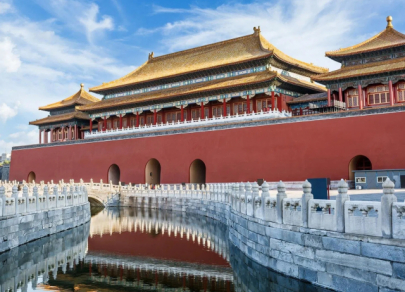FX.co ★ Seven most striking red landmarks in the world
Seven most striking red landmarks in the world
Senso-ji
Senso-ji is the oldest Buddhist temple in Tokyo and one of Japan’s principal shrines, located in the Asakusa district. Founded in 645, the temple was nearly destroyed during World War II but was restored in the 1950s and has since become a symbol of the city’s resilience. The complex is adorned with deep red facades, which stand out boldly against the modern cityscape and instantly attract the gaze. Of particular note is the gigantic paper lantern at the main gate—a scarlet cloth structure about 4 meters high that has become a hallmark of the temple and the entire neighborhood.

Pacific Design Center
The red building of the Pacific Design Center in Los Angeles is a vivid landmark in the designer quarter of West Hollywood and a testament to architectural audacity. Built in 2013 to a design by Cesar Pelli, it immediately became a visual focal point thanks to its curved silhouette and saturated red hue, which strikingly slices through the azure California sky. Covering about 37,000 square meters, it is the smallest building in the complex. However, it sets the tone: inside, there are fashion houses, creative agencies, and the global headquarters of the renowned film studio A24.
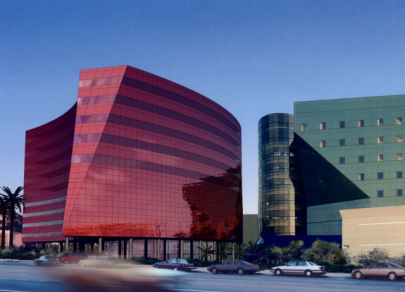
Moulin Rouge
The Moulin Rouge is the embodiment of Parisian artistry, daring, and spectacle. Established in 1889 and rebuilt after a fire in 1925, this iconic cabaret in the Pigalle district became a symbol of an era: the can-can was invented here, and the stage blossomed with feathers, sequins, and champagne. Its facade is unforgettable: bright red walls and a rotating windmill above the entrance create a sense of spectacle before you even cross the threshold. This scarlet silhouette has become the visual signature of Parisian festivity, forever embedded in popular culture.
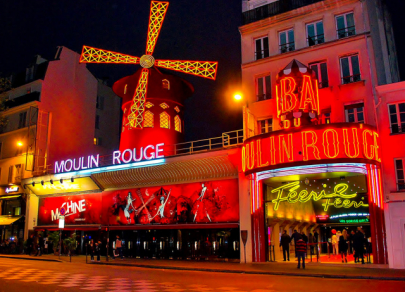
Hitachi Park
Hitachi Park in the Japanese city of Hitachinaka is a landscape masterpiece where nature turns into a living installation. The most striking spectacle unfolds in October, when over 40,000 kochia bushes color the hills in rich red hues. These spherical plants, resembling fantastical shapes from illustrations, create the effect of a surging crimson field. Shifting from spring green to autumn crimson, the kochia becomes the park’s main visual focus, making it one of the most photogenic natural sights in Japan.
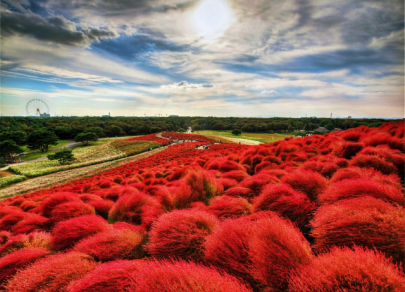
Harpa Concert Hall
Harpa Concert Hall in Reykjavik is a model of bold architecture embedded in Iceland’s natural landscape. Its glass-and-steel facade shimmers in every shade of sky and water, but the main accent is found inside: Eldborg Hall, named after a volcanic crater. This is the heart of the building, accommodating up to 1,800 people, decorated in powerful red tones reminiscent of molten lava. The tinted birch cladding and massive concrete forms evoke a sense of warmth and strength, as if nature itself served as a set designer.
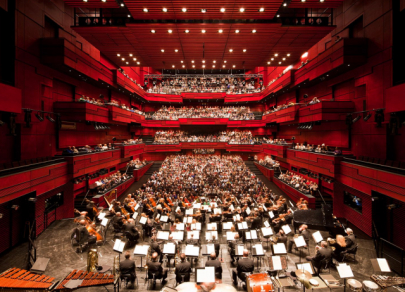
Fishing Villages of the Lofoten Islands
The fishing villages of the Lofoten Islands are a visual symbol of northern Norway. Set against dramatic mountain spines and tranquil fjords, the bright red rorbuer—seasonal fishermen’s cabins—seem to blaze along the shore, lending the rugged scenery a picturesque order. Interestingly, their deep hue arose not from aesthetics but practicality: cheap paint made from cod liver and copper waste was the only option available to poor fishermen. This palette has been preserved, transforming into a hallmark of regional cultural identity.
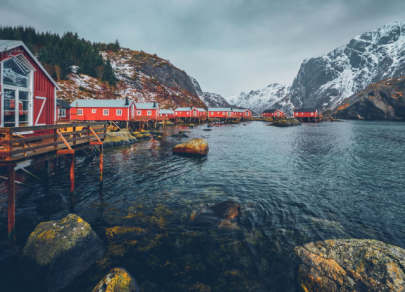
Forbidden City
The Forbidden City in Beijing is a grand embodiment of imperial power, where red is not just a decorative element but a symbolic language. Built in the early 15th century during the Ming dynasty, this 72-hectare palace complex encompasses nearly nine thousand halls and pavilions, creating the largest ensemble of traditional palace architecture in the world. Particularly impressive are the giant gates with scarlet doors studded with golden spikes—nine rows, nine in each, symbolizing in Chinese culture supreme authority and divine order.
